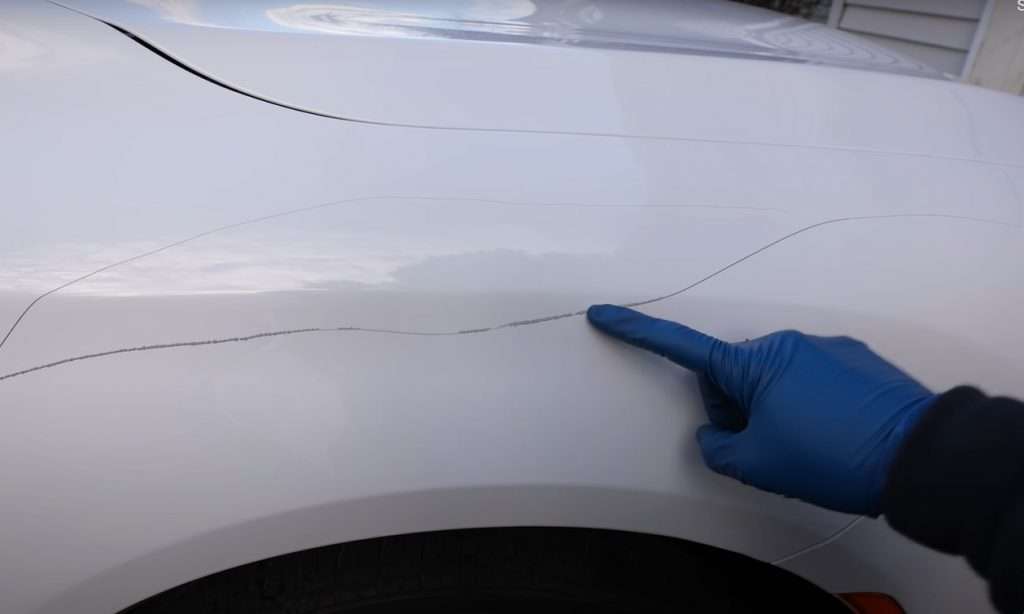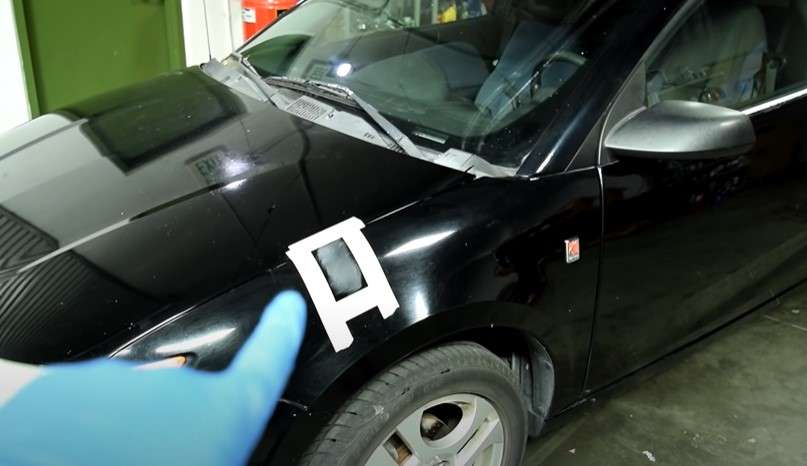Car wash brushes are perfect for getting vehicles cleaned quickly and efficiently. As it removes dirt and other debris, the brush can cause a significant scratch that may leave your car looking imperfect. Some scratches also result from accidents when the car gets knocked or bruised against rough objects.
It is necessary to remove the scratches to leave your car looking in tip-top shape. But how do you do that? This article discusses how to remove scratches from car wash brushes. Keep reading to learn more about the subject:
Preparing Your Car or Truck for Polishing
It is crucial to prepare a car before polishing. When doing it for the first time, polishing a car might be a daunting task. The process involves removing old coatings, waxes, or sealants. Be sure to wash the car thoroughly to remove other forms of dirt that could interfere with your efforts to polish it. Here is what you can do when preparing a car or truck for polishing:
1. Washing the Car
Giving the car a thorough wash removes dirt, dust, and debris that could scratch the car as you paint it. After cleaning the car, leave it for some time for the surface to dry. Check the panel gas, grille, and badges for any dirt that needs removing.
Avoid any shampoo that contains wax and other gloss-enhancing agents. Instead, use regular shampoo or cleaning powder to remove all forms of residue from the car’s surface. Luckily there are specially prepared products you can use for washing the car.
2. Removing Old Sealant and Wax
After washing and drying the car, remove old waxes and sealants to unclog the polishing pad. An unclogged polishing pad reduces the time, effort, and amount of car scratch remover you can use. In the end, the surface of the car should have nothing but the paintwork.
3. Chemical Decontamination
Next, you have to decontaminate the car. Remove all the contaminants that might have built upon the surface, including tar, tree sap, iron fallout, paint overspray, and water spots. Paintwork that feels rough after washing indicates the presence of chemical contaminants.
Apply chemical decontaminants like tar removers, water spot removers, and iron fallout removers to a wet surface. Leave them there for several minutes and rinse with clean water. Chemical decontamination minimizes the risk of scratches.
4. Physical Decontamination
Use synthetic clay bars to do physical decontamination on the surface of your car. Start by lubricating the paintwork with wax-free shampoo. Knead the clay and dip it in water or the shampoo. Glide clay on the paintwork until the paintwork starts getting completely smooth. Rinse to remove any residue.
5. Rinse and Dry The Car
Once you have cleaned the car, removed the wax, and decontaminated the surface, rinse with clean water to remove any debris that might be left behind. Use cloth brushes and wax-free shampoo to have squeaky clean paintwork. Rinse thoroughly and let it dry.
Recommended Post : Best Car Wash Brush With Hose Attachment: Experts Pick
Hand Polishing Out of Light Scratches
Did you know that you can polish scratches from the paintwork by hand? Given how big a car can be, polishing by hand can prove to be a daunting task. Thus, you may need a power tool to make the work easier.
After preparing and decontaminating the surface, inspect the surface using light to identify scratches and swirls. Use a specially-designed polishing pad to hand polish the identified scratches and swirls. Reinspect to be sure that you have done it right.
Polishing with a Random Orbital Buffer
Instead of polishing with your hands, use a random orbital buffer to remove scratches from the car brush. However, you should be careful not to cause holograms and other marks through the clear coat. That means picking a tool that won’t cause any of these issues.
Apply some dabs of polish on the buffing pad and press it on the area you need to polish. Don’t turn the polisher on just yet. That ensures that the polish is evenly splotched around the working area to not fling off after turning on the polisher.
After evenly distributing the polish, turn on the polisher. Make sure it is on a medium setting before you can start polishing. Apply just enough pressure as you move the buffer back and forth over a given area. Once you’re through, move on to another section.
The polish should blend on and not leave any unpolished parts. Once you have the best results, switch to a finishing pad and compound. A more aggressive pad and compound are necessary to remove clay bar scratches that are proving difficult.
How to remove scratches from car wash brush
The way you remove scratches from a car depends on how deep the scratch is. Here is a simple outline of what you can do in all three instances:
Removing Light Scratches
You should move from one scratch to another until you get rid of all the scratches. Here is the process of removing light scratches:
Step 1:
Wash and dry the car.
Step 2:
Use masking tape to mark the scratch. Put 1-inch masking tape above and 1-inch masking tape below the scratch before starting the application.
Step 3:
Use a microfiber cloth to apply an appropriate product (such as a polish) to cover the scratch. Use back-and-forth motions. That should take 30 seconds.
Step 4:
Using a clean microfiber towel, wipe the spot clean. Inspect the scratched area to know if you should take further steps.
Step 5:
Where there’s the need, reapply scratch repair until you get the desired results. Repeat for up to five times.
Step 6:
Apply the compound to the area around the scratch to blend in.
Removing Deep Scratches
There is nothing much new for deep scratches. They may require the application of several layers of polish using an orbital buffer. Distribute the polish evenly on the surface until of completely blends into the car’s surface. However, the exact measures you take depend on the kind of scratch you have.

Localized scratches can be paint imperfections in the form of stone ships, deep abrasions, and paint transfer. You can remove them through paint repair or a procedure involving a sanding and polishing regimen. Paint repair may require filling the scratch with paint or a clear coat that matches the previous paint.
Removing Scratches from Black Car
Imperfections on a black car need a specialized solution since they are more noticeable. You should be able to find a specially made product for black cars. Here is a simple procedure you can follow:
Step 1:
Begin by having the car washed and dried.
Step 2:
Shape the special pudding well before applying it to the affected area. Take a small amount of the polish and apply it to a damp cloth or foam applicator. Spread evenly one section after another.
Step 3:
Let it dry and haze.
Step 4:
Remove excess product using a soft cloth. Do some light buffing to improve the color depth and achieve high gloss.
How to Protect Your Finish from Further Scratches?
Once you have finished polishing a car surface, you should take steps to protect it from further scratches. Of course, accidents are unavoidable. However, that doesn’t mean leaving things to chance. Here are some steps you can take to protect the paint on your car:
1. Regular Washing and Drying
Wash your car at least once a week to prevent the accumulation of dirt, dust, and grime, which could scratch the paintwork. The best way to remove the dirt is to spray water on the surface. Instead of regular soap or dish detergent, use a dedicated automotive cleaner.
2. Polish with Wax
When polished and waxed, a car develops an attractive luster and gets protected from UV rays and dirt. You would have to apply car wax regularly to keep your vehicle protected.
3. Careful Parking
Most scratches on car surfaces take place in parking lots. You can avoid getting hit by other cars by parking further away from the entrance. In that case, a corner spot is the best option.
4. Avoid Dry Wiping
Do not use a dry cloth when removing dirt or dust from your car. The debris can scratch the vehicle’s paint and cause tiny scratches. So, don’t dry wipe.
5. Avoid Overgrowth
Driving on the road with overgrown vegetation can be detrimental to your car. On such as road, maintain the center position as much as possible. Or, you can avoid the road altogether.
6. Apply a Scratch-Resistant OEM Clear coat
If you can’t wholly avoid situations where your car can get scratched, why don’t you apply a scratch-resistant OEM clear coat? It will protect the vehicle from unexpected scratch-causing accidents.
What Are The Best Car Wash Brush For Scratch Free Wash
You should use a soft bristled car wash brush to avoid scratching the paintwork of your vehicle when washing it. This will prevent scratches and swirl marks on your vehicle. The bristles should be made from a durable material, such as nylon or polyester, so you can use it to clean hard surfaces without fear of scratching them. However, if you use a hard brush or one with sharp bristles, you will definitely scratch the paintwork of your vehicle.
Conclusion
Now that you know how to remove scratches from the car wash brush, it is essential to avoid causing such scratches in the future. Avoid scrubbing the car too quickly after giving it a new finish as a precautionary measure. Carelessness would only mean repeating the scratch removal process all over again. Once you are through, take steps to protect the car’s surface from further scratches.


